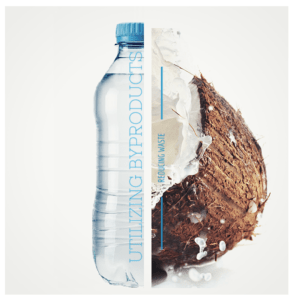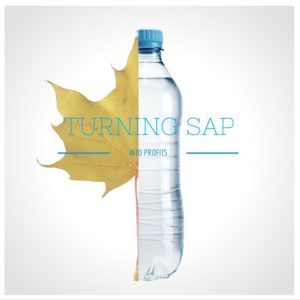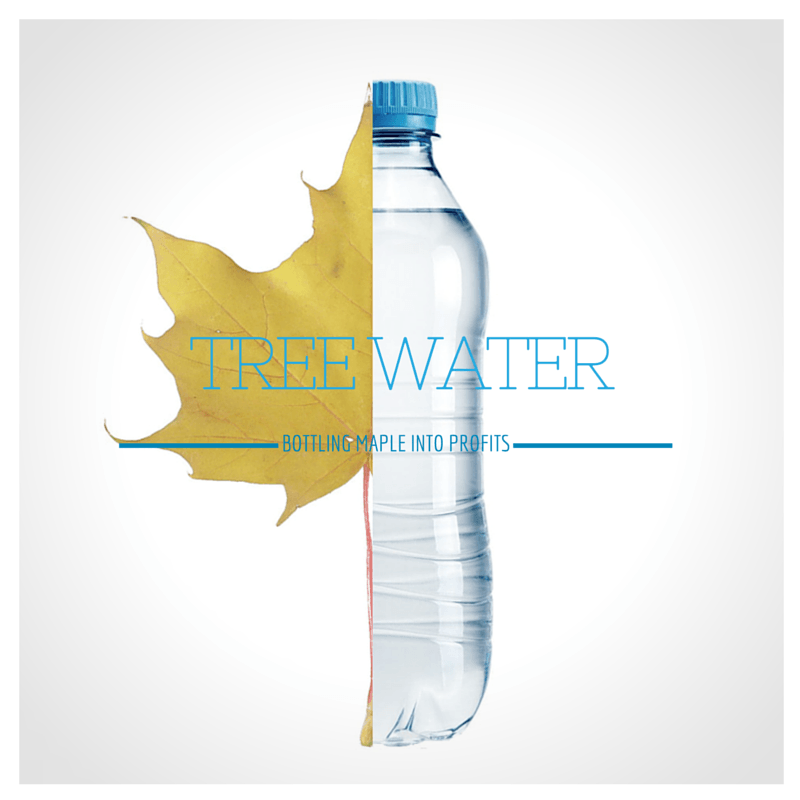Does tap water still quench your thirst or are you now looking for that next level of hydration? Look no further than to trees. The newest trend is alternative ‘tree’ waters. We have all heard of coconut water, but have you tried maple, birch or cactus water yet? In the ever growing and competitive beverage industry, bottled water varieties have expanded past spring, mineral, sparkling, distilled and flavoured. With these trendy new ‘tree’ waters, the beverage sector is diversifying beyond being a sugar supplier and catching the attention of consumers with naturally sweet water.
Utilizing the renewable byproduct
 Producing tree water is relatively simple, or at least it seems that way from a bystander’s point of view. Coconut water is the byproduct of harvesting coconuts. Young coconuts are often picked, as there is more ‘water’ in the fruit at this time. Once harvested, the flesh/meat (premium product) of the fruit and water (which was once underutilized and thrown away) are separated. Afterwards, the water undergoes filtration processing and/or pasteurization to make it stable for retail sales.
Producing tree water is relatively simple, or at least it seems that way from a bystander’s point of view. Coconut water is the byproduct of harvesting coconuts. Young coconuts are often picked, as there is more ‘water’ in the fruit at this time. Once harvested, the flesh/meat (premium product) of the fruit and water (which was once underutilized and thrown away) are separated. Afterwards, the water undergoes filtration processing and/or pasteurization to make it stable for retail sales.
Maple water is equally simple to produce. Maple producers use a series of taps and hoses that run from tree to tree, collecting the sap. After collection, the sap is boiled to reduce the water content and increase the saps sugar concentration into a syrup. To make maple water, however, many companies simply filter the sap and bottle it, selling a mildly sweet water.
Profitable Agriculture for Tree Farmers
A maple tree’s sap production ranges based on the variety, weather, and taps, producing as little as a gallon to 15 or 20 gallons of sap per year. The sugar content of maple sap is often less than 5%, so in order to reach a specific colour and grading by sugar content, the sap is reduced. It can require anywhere from 30-50 gallons of sap to make a single gallon of syrup. The increased popularity of tree water now gives maple producers the option to another possibly more profitable, niche market.
 If naturally flavoured waters continue to gain popularity traction with consumers, syrup producers may shift part of their sap into bottled water production. For example, 1 gallon of sap doesn’t require any evaporation to become 1 gallon of maple water, which means more volume of product to be sold. A maple water company like SEVA, 1 gallon of sap is equal to nearly 5 of its 33.8 fl. oz. bottles, which sell for $5.00 each. While for US company Drink Maple, 1 gallon of sap would produce just over 12 bottles (12 pack sells for $38.99 USD). That means per gallon, SEVA’s revenues before costs is ~$23.67 CDN and Drink Maple is able to sell that same gallon for the $41.43 USD.
If naturally flavoured waters continue to gain popularity traction with consumers, syrup producers may shift part of their sap into bottled water production. For example, 1 gallon of sap doesn’t require any evaporation to become 1 gallon of maple water, which means more volume of product to be sold. A maple water company like SEVA, 1 gallon of sap is equal to nearly 5 of its 33.8 fl. oz. bottles, which sell for $5.00 each. While for US company Drink Maple, 1 gallon of sap would produce just over 12 bottles (12 pack sells for $38.99 USD). That means per gallon, SEVA’s revenues before costs is ~$23.67 CDN and Drink Maple is able to sell that same gallon for the $41.43 USD.
If that same gallon of sap and were made into syrup using a 30:1 ratio, roughly 5.3 oz. or 151 ml of syrup would be produced. At Walmart.ca 540 ml of Lalonde Pure Medium Maple Syrup sells at $6.97, and at Hudson’s Bay you can purchase 100 ml of light maple syrup for $7.99. The reason for such a price range is a result of quality, quantity and the time and money it takes to produce syrup. Since the same gallon of sap could help producers capture more profits, producers may begin to sell into the beverage industry to capture a larger percentage of the consumers’ disposable income and reduce their own costs and time.
So the next time you need to quench your thirst and water just won’t satisfy, grab a maple water or other ‘tree’ water product, and support a renewable byproduct of agriculture.


